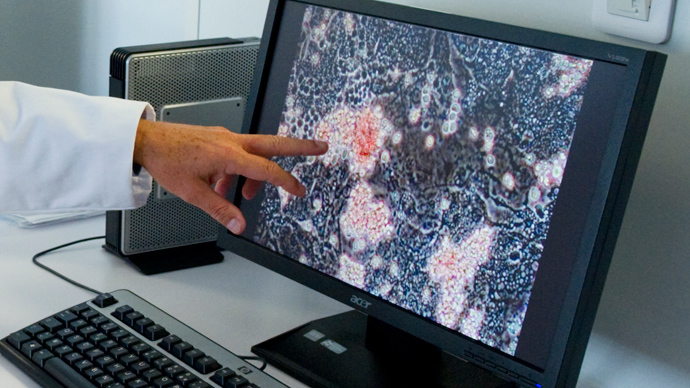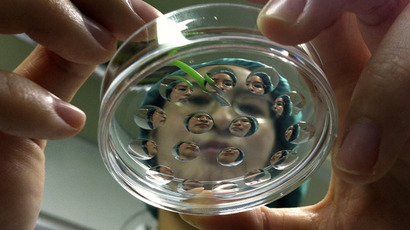Simple and cheap: Scientists find new way to grow stem cells without embryos

In a significant breakthrough, scientists have found a cheap and easy way to produce highly sought-after embryonic-like stem cells without terminating any embryos. The ground-breaking discovery could usher in a new era in stem cell biology.
Although the research was carried out on laboratory mice, scientists believe that the same approach should also work on human cells, researchers said.
"If it works in man, this could be the game changer that ultimately makes a wide range of cell therapies available using the patient's own cells as starting material - the age of personalized medicine would have finally arrived," said Chris Mason, professor of regenerative medicine at University College London.
Since the discovery of human embryonic stem cells, scientists have had high hopes for their use in treating a wider variety of diseases because they are "pluripotent," or, in other words, are able develop into many different cell types.
Stem cells are widely seen as a repair kit for the body.
So far, there have been two ways of producing those pluripotent stem cells--harvesting cells from embryos in the first days after fertilization or inducing the changes by introducing new genes into a cell, the so-called "iPS" technology.
But research on human embryonic stem cells has generated much public ethical debate as it has attracted interest from both scientists and potential patients. While it was seen as a major breakthrough and a hope to cure many diseases, pro-life campaigners have argued that destroying an embryo means destroying a potential life.
The latest study, published in the journal Nature, has showed there could be a third way, "the most simple, lowest-cost and quickest method" and one that is also ethically sound.
Pluripotent stem cells can be simply reprogrammed from a patient’s own mature, adult cells, as scientists from the RIKEN Center for Developmental Biology in Japan and Brigham and Women's Hospital and Harvard Medical School in the United States found out.
"It may not be necessary to create an embryo to acquire embryonic stem cells. Our research findings demonstrate that creation of an autologous pluripotent stem cell – a stem cell from an individual that has the potential to be used for a therapeutic purpose – without an embryo, is possible,” Charles Vacanti, senior author of the study, said.
Researchers have called the phenomenon STAP cells, stimulus-triggered acquisition of pluripotency.
To trigger the transformation researchers take adult cells and simply let them multiply. In the next stage, they subject cells to external stress, "almost to the point of death” , by exposing them to various hostile environments, for instance, acid or low oxygen.
To researchers’ surprise, within a period of only a few days the STAP cells survived and recovered from the stressful stimulus by naturally reverting into a state that is equivalent to an embryonic stem cell. Those cells were then able re-differentiate and mature into any type of cell and grow into any type of tissue - skin, bone, organs - depending on the environment into which they were placed, like embryonic stem cells.
Cells from skin, muscle, fat and other tissue of newborn mice appeared to go through the same change.
"It's very simple to do. I think you could do this actually in a college lab,” Vacanti said.
Scientists say that the new technique could pave ways to tackling conditions like cancer, heart disease, Parkinson's and stroke.
"If we can work out the mechanisms by which differentiation states are maintained and lost, it could open up a wide range of possibilities for new research and applications using living cells," said Haruko Obokata, who lead the work at RIKEN.
But Obokata stressed that it is still premature to compare it to iPS technology in terms of potential medical uses.
Besides a possible new way to grow tissue for treating illnesses, Vacanti also acknowledged that the technique, if proven to work with human cells, could be potentially used for cloning humans.














